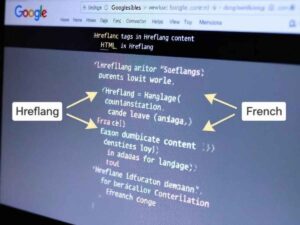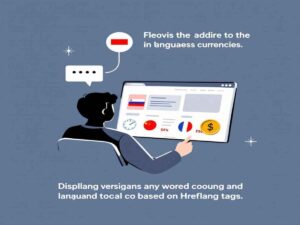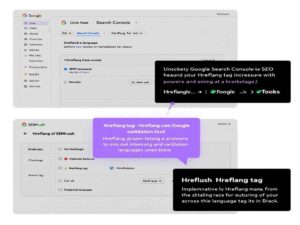The Importance of Hreflang Tags in International SEO

Expanding your brand into international markets offers immense growth opportunities, but it also comes with unique challenges. To succeed globally, your website needs to appeal to diverse audiences while ensuring users find the right content in their language and region. One of the most powerful tools for achieving this is Hreflang tags.
Hreflang tags enable search engines to serve the correct regional and language-specific versions of your website to users, ensuring better visibility, improved user experience, and higher conversion rates. If you’ve been struggling with duplicate content issues or low engagement rates in global markets, understanding and implementing Hreflang tags could be your solution.
Why Hreflang Tags Matter in International SEO
Targeting the Right Audience
Hreflang tags act as a roadmap for search engines, pointing them to the correct language or regional version of your content. For example, when a user in Spain searches for your product, Hreflang tells Google to serve them the Spanish version of your website (e.g., hreflang=”es-es”).
This precise targeting improves engagement and conversions by delivering localized content tailored to users’ preferences and cultural context. For e-commerce brands, it could mean showing the right language and currency to boost sales.

Avoiding Duplicate Content Issues
Publishing the same content across different language or regional versions without proper Hreflang implementation can trigger duplicate content penalties from search engines. Hreflang tags solve this by clarifying to search engines that these versions are alternatives, not duplicates.
For example, if your website has pages in U.S. English, U.K. English, and Canadian English, Hreflang defines these relationships and protects your SEO rankings.
Improved Search Engine Ranking
Search engines prioritize user relevance. By signaling the correct page version to serve based on language and location, Hreflang tags elevate your content’s visibility in regional search results. For instance, an effective Hreflang implementation can improve rankings on Google, Baidu, and Yandex, depending on your target market.
How to Implement Hreflang Tags
Understanding the Syntax of Hreflang Tags
Hreflang tags use specific attributes to define the language and regional target of a webpage. Here’s a simple example for a U.S. English page targeting Spanish and French speakers as well:
<link rel=”alternate” hreflang=”en-us” href=”https://example.com/us/” />
<link rel=”alternate” hreflang=”es-es” href=”https://example.com/es/” />
<link rel=”alternate” hreflang=”fr-fr” href=”https://example.com/fr/” />
HTML Header vs. XML Sitemaps
- HTML Header – Place Hreflang tags directly in the <head> section of your page’s code.
- XML Sitemaps – Perfect for large sites. Add Hreflang attributes directly in the sitemap file, which is easier to manage when dealing with hundreds of pages across various regions.
Steps to Add Hreflang Tags to Your Website
Manual Implementation
- Add the Hreflang tag in the <head> section of each alternative page.
- Ensure the hreflang tag references all versions of the page, including itself. This is known as reciprocal tagging.
Using XML Sitemaps
If managing Hreflang tags in HTML feels overwhelming, use an XML sitemap. Example:
<url>
<loc>https://example.com/us/</loc>
<xhtml:link rel=”alternate” hreflang=”en-us” href=”https://example.com/us/” />
<xhtml:link rel=”alternate” hreflang=”es-es” href=”https://example.com/es/” />
</url>
Many tools like Google Search Console or SEMrush offer sitemap validation to ensure implementation accuracy.

Best Practices for Using Hreflang Tags
Targeting Multiple Languages and Regions Effectively
When tailoring your website for various audiences, use Hreflang tags to differentiate between:
- Languages only (e.g., en for all English-speaking users).
- Language + Region (e.g., en-gb for U.K. English and en-us for U.S. English).
Take Adobe as an example; their website serves different regions effectively by leveraging Hreflang tags, ensuring users in Canada see French content while U.S. visitors access English pages.
Handling Incorrect or Missing Hreflang Tags
Common Mistakes
- Wrong Language Codes – Use ISO 639-1 language codes (e.g., fr, es).
- Missing Reciprocity – Ensure all linked pages link back to each other.
Validating Hreflang Tags
Regularly audit your Hreflang tags using tools like:
- Google Search Console
- SEMrush
- Ahrefs

Benefits of Hreflang Tags for International SEO
Boosting Local SEO Performance
Hreflang ensures optimized performance in local search results by targeting localized user behaviors. This means more relevant traffic, higher engagement, and better ROI for your content marketing efforts.
Improved User Experience
Directing users to suitable language or regional content results in a seamless experience and enhances conversion rates. It’s like walking into a store and being greeted in your language!
Increased Global Visibility
Optimizing with Hreflang tags can open doors to regions you never imagined reaching. E-commerce giants like ASOS use Hreflang tags to give their global audience personalized shopping experiences while managing inventory across multiple currencies.
Common Challenges and How to Overcome Them
- Complex Website Structures – Use subdirectories (e.g., /uk/) or subdomains (uk.example.com) to organize content by region.
- Skewed Analytics – Segment analytics tools by location to understand user behavior accurately.
- Duplicate Pages – Validate every localized page to ensure it contains unique tags.

Take Your Global SEO Strategy to the Next Level
Hreflang tags aren’t just a technical detail; they are a game-changer for businesses looking to expand their international footprint. From improving rankings to offering users a better experience, they’re essential to modern SEO strategies.
Not sure where to start? Comprehensive tools like Google Search Console and Ahrefs can simplify implementation. Or, consult an SEO expert to fine-tune your global strategy. Time to ensure your website speaks your audience’s language (literally)!
So, you’ve learned the importance of hreflang tags in optimizing your website for international audiences. But what other benefits can they provide?
One major advantage of hreflang tags is improved search engine rankings. By targeting specific languages and regions, you are able to better target your intended audience and increase your chances of appearing higher in search results.
But it’s not just about rankings – hreflang tags also offer a better experience for users. When someone searches for content in their preferred language, they expect to see relevant results. By implementing hreflang tags, you are ensuring that users are directed to pages that are specifically tailored to their language and region.

Conclusion
Hreflang tags are an essential component of any successful international SEO strategy. They play a critical role in helping search engines understand the linguistic and regional targeting of your content, significantly improving your website’s visibility to the right audiences. By avoiding duplicate content across versions of your site, hreflang tags ensure that search engines don’t penalize your rankings, giving your pages the best chance to perform well in international markets. Most importantly, they enhance the user experience by directing visitors to content in their preferred language and region, fostering trust and satisfaction.
Frequently Asked Questions (FAQs)
What are hreflang tags, and why are they important?
Hreflang tags are HTML attributes that signal to search engines the language and regional targeting of your webpage. They are crucial for improving website visibility for the right audience and enhancing the user experience by directing users to content in their preferred language and region.
How do hreflang tags improve my website’s search engine rankings?
By avoiding duplicate content issues across multiple versions of your site, hreflang tags ensure search engines don’t penalize your rankings. This helps your pages perform better in international markets.
Can hreflang tags help boost user engagement?
Absolutely! By delivering content in the user’s preferred language and region, hreflang tags build trust and satisfaction among visitors, leading to a more positive experience and potentially higher engagement.
Are hreflang tags beneficial for businesses targeting international audiences?
Yes, hreflang tags are especially crucial for businesses targeting international markets. They help tailor your content to different languages and regions, ensuring your site reaches and appeals to the right demographic.
What happens if a website doesn’t use hreflang tags for multilingual content?
Without hreflang tags, search engines might struggle to determine the appropriate version of your site to show users. This could lead to misdirected audiences, a poor user experience, and even reduced search engine rankings due to duplicate content issues.





